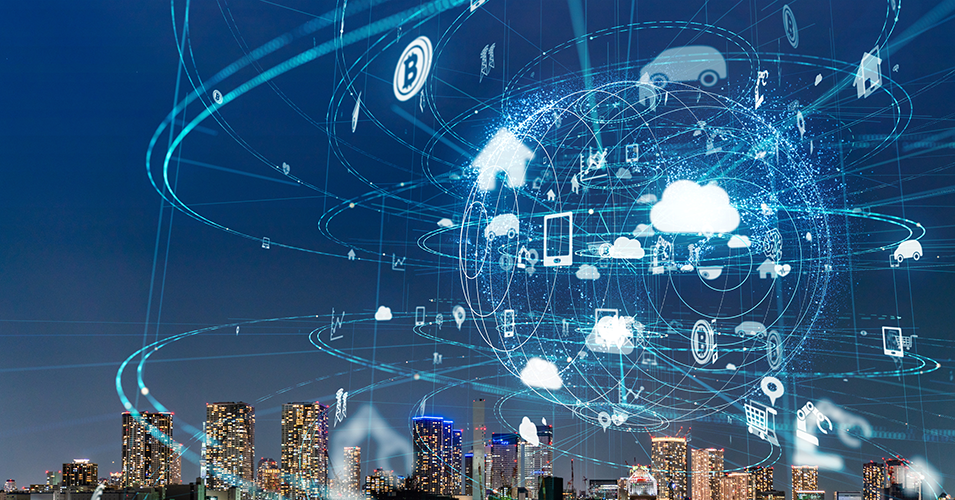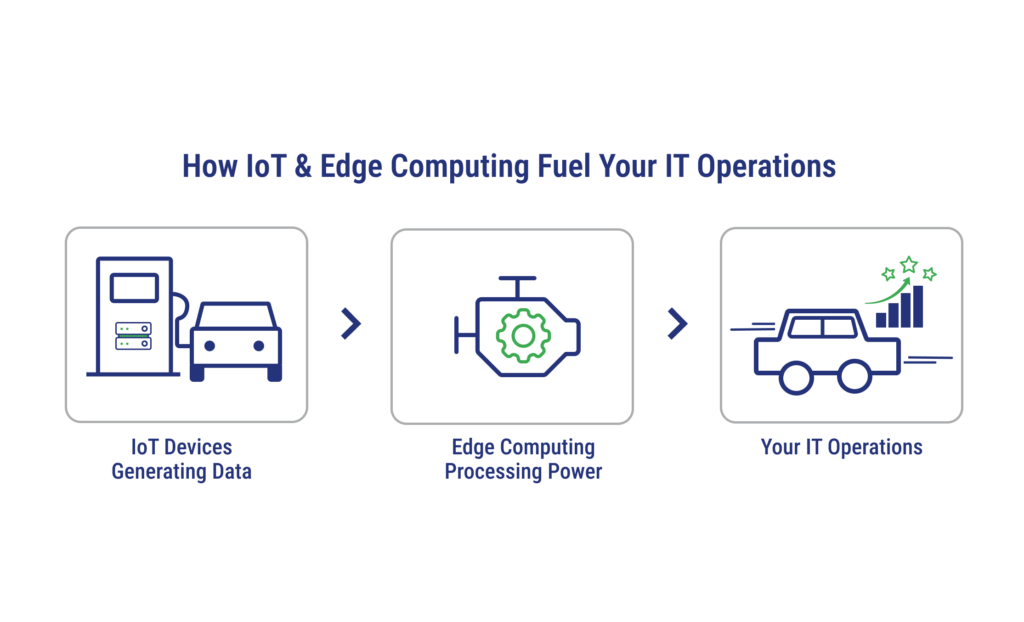
Think of the relationship between edge computing and IoT like an engine and the fuel necessary to power that engine. Internet of Things (IoT) devices can generate a lot of data, but they’re only as useful as the processing power that serves as the engine—this is where edge computing comes in. We’ll cover how these technologies work together and how you can leverage edge computing and IoT in your business.
Understanding Edge Computing and IoT
What Is Edge Computing?
Edge computing gets its name from where data is processed in relation to the network. Instead of being centrally located at a data center, edge deployments process data closer to the data source, generally on the edge of a network. This can enable faster responses, empower real-time decision-making, and reduce the reliance on centralized cloud servers.
Businesses can choose between cloud-based edge or on-premises edge. Cloud-based edge offers:
- Centralized management and control
- Lower emphasis on real-time responses
On-premises edge offers:
- Lower latency (ideal for real-time requirements)
- Higher risk of attacks on the perimeter compared to cloud
What is IoT?
The Internet of Things (IoT) refers to interconnected internet devices that share and collect data to send back to be processed. This could include smart home devices, sensors in smart cities, devices that monitor environmental conditions in data centers, and more. Key characteristics include:
- Connectivity to the internet
- Data generation from sensors and devices
- Real-time remote monitoring and control from anywhere
- Scalability to accommodate new applications
How Edge Computing Enhances IoT?
Edge computing and IoT are complementary technologies. Because edge computing processes data closer to the source, IoT devices can bring better user benefits, including improved processing, reduced latency, and better security. This could include smart home devices, sensors in smart cities, and devices that monitor environmental conditions in facilities, as well as connected devices that track patient vitals and ensure timely interventions in critical situations.

Data Generation and Processing
IoT devices generate vast amounts of data—IDC predicts that by 2025, these devices could generate 79.4 zettabytes of data. Time-sensitive applications can be limited by traditional cloud-based data processing. Edge computing allows IoT data processing to happen locally, reducing the time it takes for analysis and action.
Operational Continuity
Even if a network connection is disrupted, edge computing ensures that IoT devices can continue functioning independently. This maintains their operation and data processing and improves the user experience.
Context-Aware Computing
Edge devices can leverage geolocation data from IoT sensors, enabling location-based services and applications that respond dynamically to the environment. For example, a city could use edge computing to optimize traffic flow based on the real-time location data collected from connected vehicles. These context-aware services enhance user experience and functionality.
Real-Time Decision Making
Real-time decision-making is important for critical systems such as industrial control systems, smart grids, and autonomous vehicles. Edge computing enables low-latency data processing for IoT applications to generate real-time analytics and faster responses.
Reduced Latency and Bandwidth Requirements
Not only does edge computing reduce the time it takes for data to be processed and analyzed, it also allows for filtering and processing data locally. This means you only send essential information to the cloud, reducing the amount of data transmitted, lowering costs associated with bandwidth, and easing network congestion.
Better Performance
Because of this faster processing, reduced latency, and lower bandwidth requirements, edge computing can enhance the overall performance of IoT applications. Edge computing can support more efficient and responsive IoT deployments.
Improved Security
Edge computing processes data closer to the source, and by cutting down on the amount of data transmitted over the network, this technology can also improve security. Risks from data breaches and unauthorized access are much lower when data processing is limited and spread out.
Smoother Integration Between Legacy Systems
Businesses with existing legacy systems can use edge devices to act as gateways between these systems and IoT devices. Edge devices can translate data between different protocols, allowing IoT devices to effectively communicate with other systems.
Potential Cost Savings
Processing data locally can also be more cost-effective—edge computing can reduce costs associated with data transfer and storage. IoT deployments that generate large volumes of data can save significantly.
Edge Computing and IoT Use Cases
Edge computing and IoT use cases aren’t limited to the home. Businesses that conduct environmental monitoring, municipalities building smart cities, retail companies looking for advanced analytics, healthcare organizations looking for real-time patient monitoring, factories seeking more efficient warehousing processes, and companies looking for live tracking in supply chain management can all benefit from edge computing and IoT devices.

Environmental Monitoring
Data centers require precise controls over temperature, humidity, and other environmental factors to make sure equipment is kept safe and operational. Edge computing can enhance IoT capabilities in environmental monitoring for data centers by providing real-time insights, reducing latency, optimizing bandwidth usage, and enabling predictive maintenance.
Smart Cities
Properly equipped smart cities can respond to real-time traffic and monitor other environmental conditions such as noise and air quality. Quick responses can allow traffic controls to work more effectively and for city officials to act when conditions are not as they should be.
Retail Analytics
Stores can become more personalized through IoT devices and edge computing powering real-time retail analytics. Retailers can monitor traffic patterns, product interaction, and other aspects of customer behavior to optimize store layouts, proactively manage inventory, and improve marketing campaigns.
Real-Time Tracking in Supply Chain Management
Managing items and processes across a supply chain can feel impossible with so many variables. IoT devices supported by edge computing can provide insights about temperatures, real-time locations, and environmental conditions that may impact the functionality or safety of certain products.
Need Help Modernizing Your IT Operations?
Edge computing is a great modern solution for businesses looking for real-time responsiveness and positive user experiences for IoT devices, but being on the edge can also make it feel hard to hang on. TierPoint’s IT modernization solutions can help usher your business into a new cloud frontier.
Find out what other IT modernization trends and strategies technology leaders at mid-sized businesses need to consider for 2025. Download TierPoint’s official report below.

